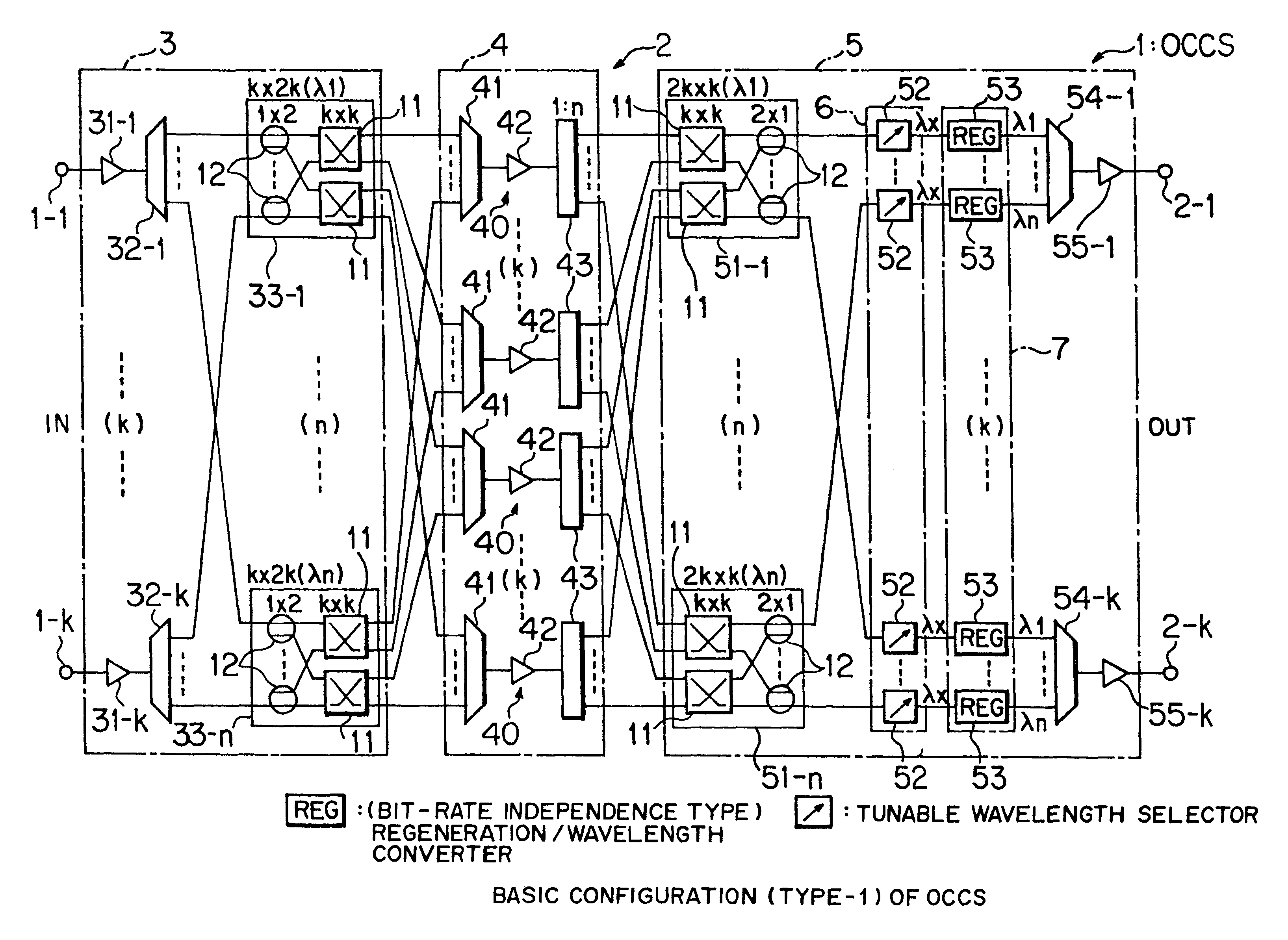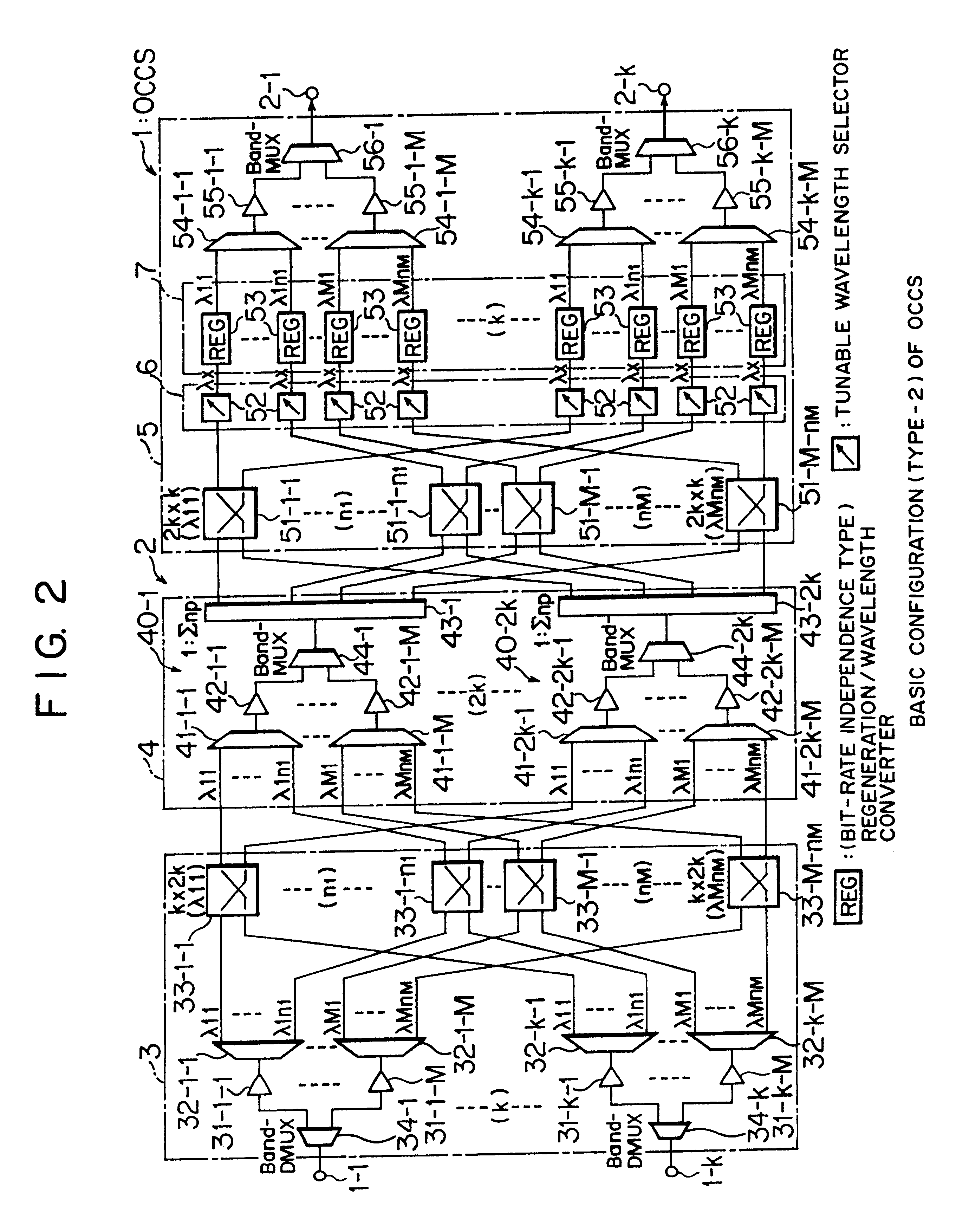Optical cross connect apparatus and optical network
a cross-connecting and optical network technology, applied in multiplex communication, instruments, optical elements, etc., can solve the problems of affecting the extensibility of the system itsel
- Summary
- Abstract
- Description
- Claims
- Application Information
AI Technical Summary
Benefits of technology
Problems solved by technology
Method used
Image
Examples
Embodiment Construction
FIG. 38 is a block diagram showing a configuration of an OCCS (second mode) according to a second concrete example of this invention. In brief, the OCCS 1 shown in FIG. 38 has a configuration in which the 32-wavelength tunable wavelength selectors 84 shown in FIG. 34 are shifted to the rear stage of the 16.times.8 switches 51-1 to 51-128. That is, in this case, the tunable wavelength selectors 84 constitute a wavelength selecting section for selecting optical signals of desired intra-apparatus wavelengths .lambda.r from the outputs (32-WDM signals) of the 16.times.8 switches 51-1 to 51-128 in accordance with instructions from the apparatus control section 9.
Therefore, in a routing section 8b shown in FIG. 38, each of 128.times.128 routing sections 8B-1 to 8B-16 has a configuration in which the tunable wavelength selectors (wavelength filters) 84 shown in FIG. 34 are omitted as shown in FIG. 39. Other components and the functions and operations thereof are similar to those described ...
PUM
 Login to View More
Login to View More Abstract
Description
Claims
Application Information
 Login to View More
Login to View More - R&D
- Intellectual Property
- Life Sciences
- Materials
- Tech Scout
- Unparalleled Data Quality
- Higher Quality Content
- 60% Fewer Hallucinations
Browse by: Latest US Patents, China's latest patents, Technical Efficacy Thesaurus, Application Domain, Technology Topic, Popular Technical Reports.
© 2025 PatSnap. All rights reserved.Legal|Privacy policy|Modern Slavery Act Transparency Statement|Sitemap|About US| Contact US: help@patsnap.com



